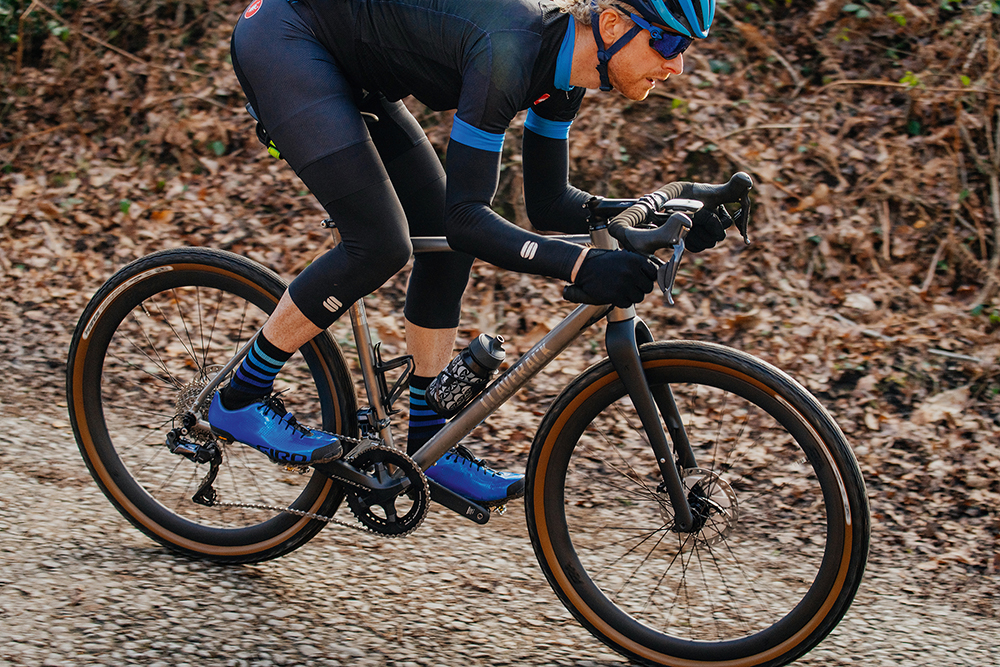Words by Stu Bowers for www.cyclist.co.uk – November 14, 2019
‘Jack Laverack was my grandfather’s name,’ says Oliver Laverack, explaining how he came to name his brand J.Laverack Bicycles. ‘He was my inspiration and the reason I started the company, so I named it after him.
‘He was a Yorkshireman who simply loved to ride his bike, often all day and for hundreds of miles, and who always had epic tales to tell. To me his stories captured the spirit of bike riding: just getting out there to explore.’
Clearly, though, there’s more to starting a bike brand than just having a relative who loved to ride.
‘I started out designing frames purely for myself,’ says Laverack.
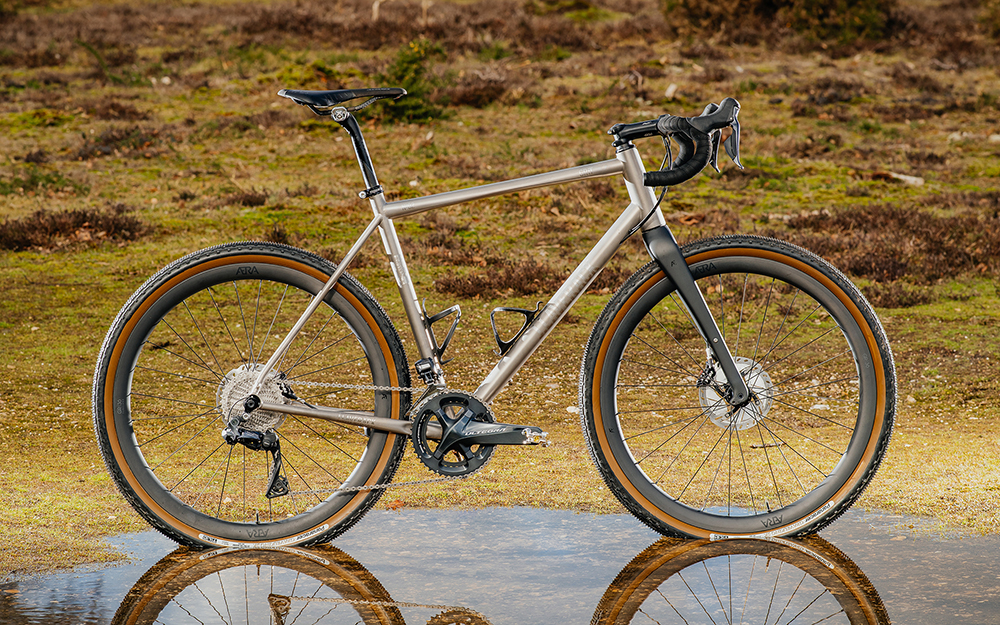
‘I’m obsessed with Roubaix and Flanders, and I wanted to try and create the perfect bike for my favourite rides of the year. It’s how the original J.Ack, a kind of cyclocross-cum-endurance-cum-rough-road-Classics-special came about.
‘Essentially it’s a very robust frame with a comfortable geometry.’
One at a time, please
Laverack has chosen to work exclusively in titanium. The frames are fabricated in a factory in the Far East, but each one is a custom project, beginning life with a bike fit and consultation at the company’s headquarters in Rutland, UK.
The Grit is Laverack’s response to the burgeoning gravel scene. The majority of the construction is double-butted 3Al 2.5v titanium, although the bottom bracket and head tube benefit from the extra stiffness the 6Al 4v grade brings.

Carbon, however, is still an inherent part of the bike’s design. ‘Our designs all really start with the fork,’ Laverack says.
‘The fork dictates so much about a bike – handling, toe overlap, tyre clearances and so on – and so we developed our own carbon fork, and the frame takes shape around those parameters.’
The build quality is obvious immediately: the welds are precise, the tubes pristinely finished, the bead-blasted graphics subtle and classy.
The frame’s details, such as the engraved head badge bearing the lion of Flanders emblem, and the way each frame (well, the first 50 at least) is numbered and dated, are rather charming too.
Using British brand Hope for the bottom bracket, headset and disc brakes on this test bike helps preserves the homegrown feel, but more importantly Laverack has chosen components of notable reliability and durability in keeping with the bike’s go-anywhere, do-anything mantra.
And a threaded bottom bracket shell certainly gets my vote over press-fit systems. The beauty of being custom, though, is that you get to choose exactly how you want your Grit to be.
Aside from the geometry and spec, that includes the frame finish, the bottom bracket standard, the mounts (mudguard, rack, third waterbottle cage, and so on) and even internal dynamo cable routing, if that’s your bag.
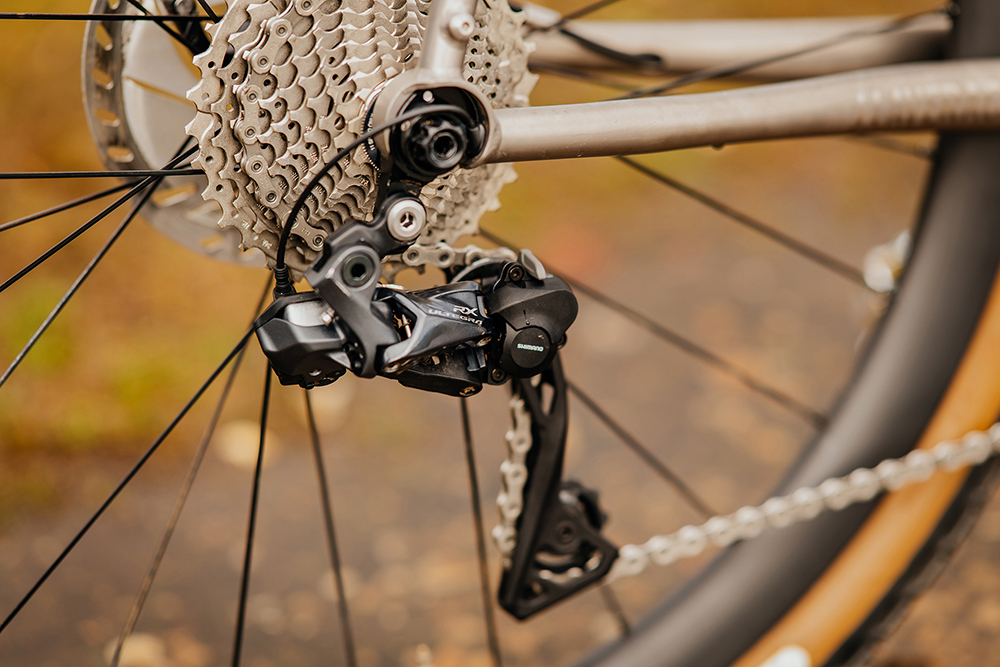
Here’s mud in your eye
There’s heaps of tyre clearance, allowing for a 650b x 52mm or 700c up to 48mm. For the purposes of this test Laverack provided me with two sets of wheels, which enabled me to divide my time between the two sizes.
I’d be lying, though, if I said I split my time evenly. While both options have their merits, I quickly became fond of the Grit in the 650b guise.
The 700c set-up was marginally lighter and preferable if I was sticking purely to tarmac, but that was very rarely the case.
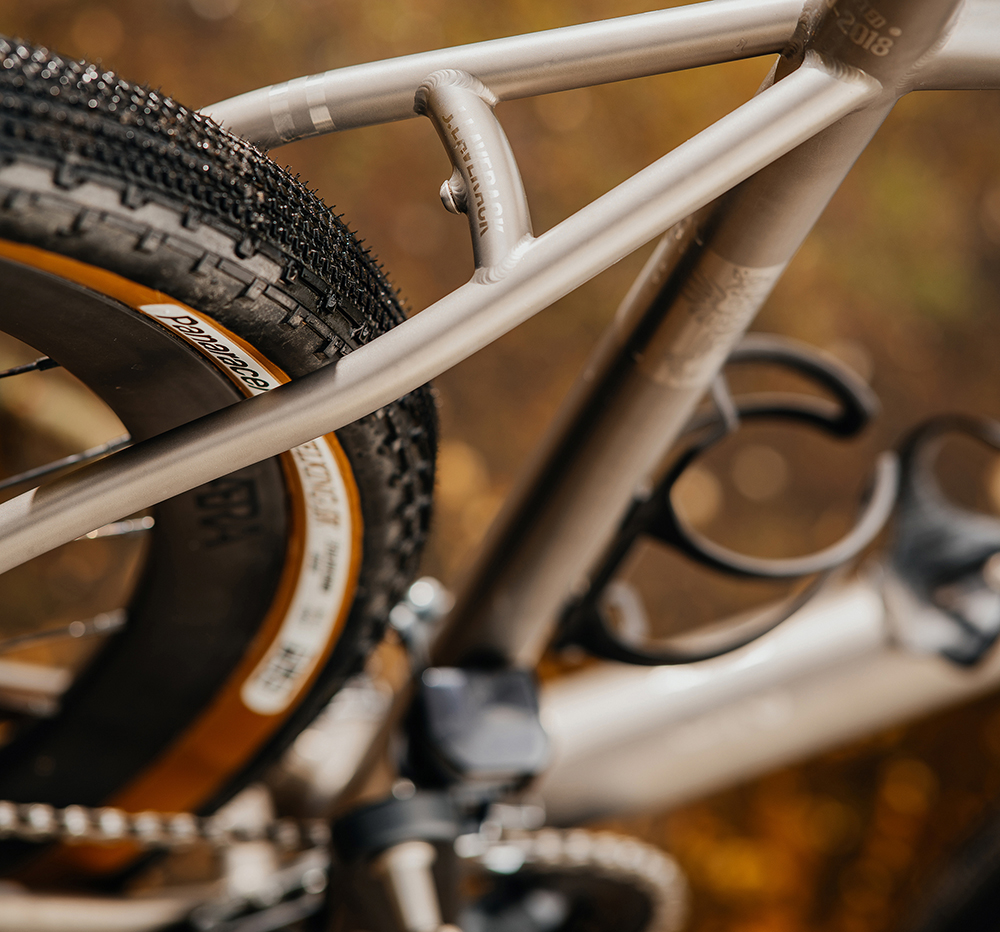
This bike is so capable off-road that I always felt like that’s where I wanted to take it, so most often I was slotting in the 650b and heading onto the dirt.
An early jaunt along parts of the Jurassic Coast in Dorset could have met with a sticky end were it not for the Grit’s capabilities.
I found myself up to the axles in mud as an exploratory detour took me onto a bridleway that was clearly frequented more by cattle than bicycles.
The voluminous 48mm Panaracer Gravel King SK tyres coped admirably, as did the frame clearances, which never clogged. On many other gravel bikes I think I’d have been inclined to turn back, but on the Grit I was able to plough on regardless.
It’s that kind of bike. It feels tough, resilient and up for everything. I’d liken its off-road capabilities as similar to sticking a set of drop bars on a hardtail mountain bike.
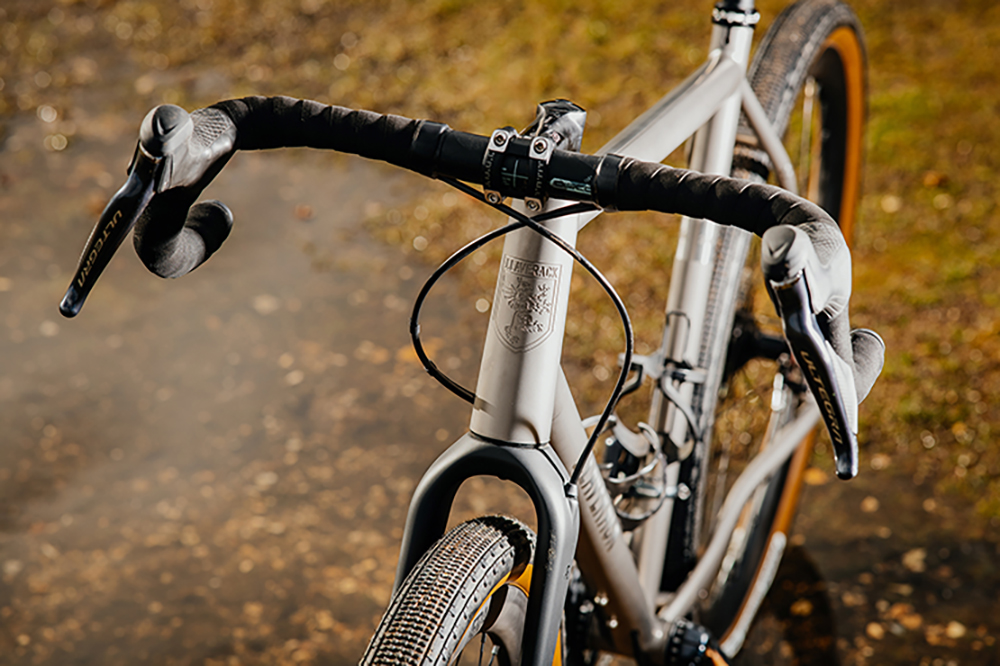
The handling is spot on, a successful merger of geometry built for stability and a short (90mm) stem length to ensure the steering response isn’t sluggish.
It’s a simple yet effective ploy. The titanium soaks up the chatter of rough dirt or gravel paths superbly, and along with the extra cushioning and grip from running the 48mm tyres at 35psi – which, as an aside, was still not overly lethargic on the road – it proved to be a pleasurable mount for a day-long outing.
I found myself arriving home after four hours in the saddle, a good majority spent off-road, caked in mud, grinning from ear to ear and most pleasingly not feeling completely beaten up.
Life of Ti
I think the gravel market is titanium’s chance for a big comeback. Most accept it will never keep up with the stiffness-to-weight ratio that carbon can offer for a top-end road bike, but with the rough and tumble of off-road riding, the needle sways very much back to titanium.
It’s perfect for gravel: incredibly tough, impact resistant and, with no stickers or paint, boasting a beautiful raw finish that will look the same in 10 years.
Titanium bikes will never be the lightest and if the Grit has a downside it’s perhaps that it weighs upwards of 9kg.
But for all the times when I found myself cursing its heft up an incline, there were far more instances when I loved it so much that the weight just paled into insignificance.
For a brand that’s not yet five years old, J.Laverack shows maturity and a depth of knowledge well beyond its years, and the Grit is one of the most accomplished gravel bikes I’ve ridden to date.
